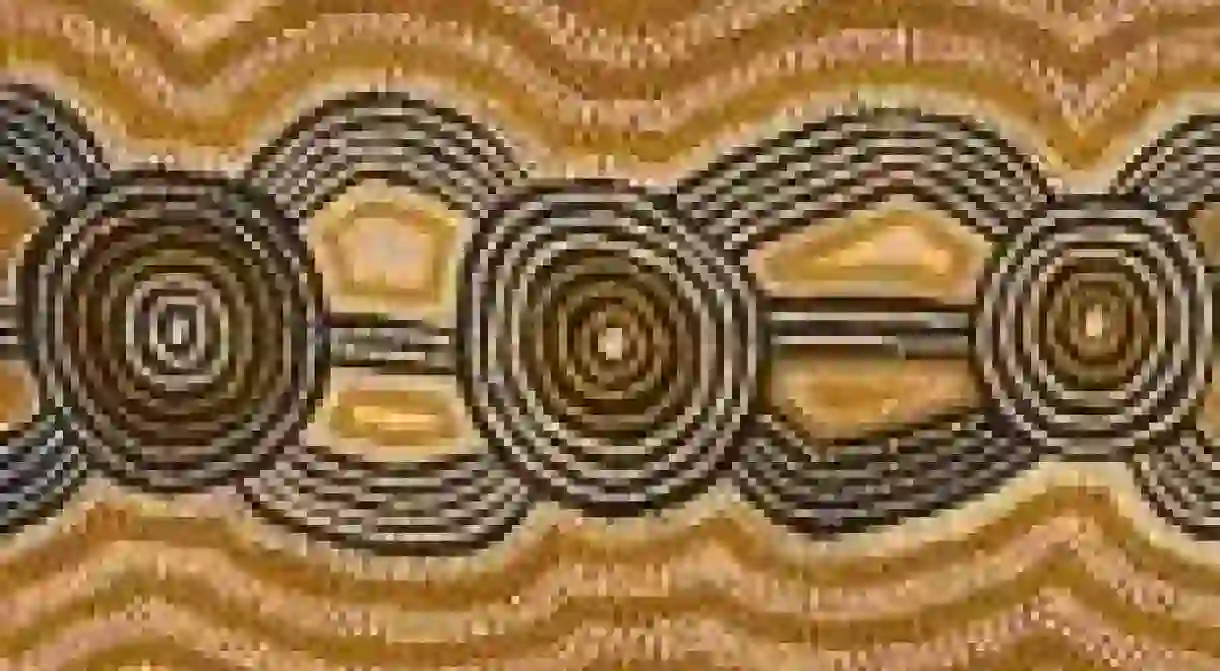Australian Aboriginal Art: An Uncertain Past but Promising Future

With reports of an ever-changing contemporary art market in Australia, authentic works of Australian Aboriginal Art are often mistreated, having been subject to fraud, unethical production and unsuitable methods of attaining authenticity in the past. However with an increase in non-for-profit art centres and their connections with creative institutions, the future of these works looks to be more secure.

The global art market can, at times, be fickle. Adapting to current trends and styles as they go in and out of fashion, headlines consistently focus on premium sales, and the Australian Aboriginal art market tells much of the same story. There have been several reports on the fluctuating Australian Aboriginal Art market, and between the years of 2006 and 2011 the overall sales of Aboriginal Art in Australia diminished. This came to be particularly noticeable as it contrasted with previous years, which saw a dramatic peak in the value of the Aboriginal Art market which art economy experts calculated to be worth upwards of 500 million AUD. Issues with the world economy as a whole, concerns regarding the origins and creation of these artworks, and the public’s understanding of them and their relation to the contemporary art market have resulted in many art authorities closely monitoring the rate at which Aboriginal artworks are selling and the unconventional rate at which they are in demand by prospective buyers.

Traditionally, there is no distinct emphasis within the Aboriginal Art movement on the creations of the artist as an individual. In contrast to Western art, where the significance is on the artist innovatively crafting pieces in isolation, Australian Aboriginal Art is often difficult to date, and even more difficult to trace back to its practitioner as many works are the result of collaboration. This is partially due to the way in which European art is authenticated, which is not as effective when applied to works that are created remotely, within large creative communities and where very little if any physical documentation about its creation exists. The language that is used to analyse these works is the same used to analyse works of art within the Western market, and is therefore often unsuitable. In order to tackle this, artists and art centres across Australia have teamed up with national auction houses and museums in order to ensure that the production of authentic works of Aboriginal Art is not subject to fraud. Effectively sourcing and authenticating works of Australian Aboriginal Art is exceedingly important, as increasing profitability provides artists coming from remote locations and their local communities with an independent source of income, which opens up opportunities such as establishing businesses and in turn provides increasing employment advantages. All of these advantages circulate around an artistic movement that is diverse, vivid and distinct. Encouragingly, the growing relationships between artists and art centres in Australia is proving effective, with successes from centres such as Tjala Arts boasting an increase in sales, allowing greater involvement from artists and the creation of jobs for those in the local community. Art centres such as this are often run by and work directly with indigenous artists in order to ensure their fair-trade and treatment. With Tjala Arts helping to produce a variety of different works of fine art, from craft-based pieces to acrylic paintings, the future of the indigenous artists involved looks to further strengthen as they are able to form trusting relationships with galleries and museums in order to exhibit their works.

It is not solely the responsibility of local art centres to ensure the fair treatment of Australian Aboriginal artists and their works however, but on the galleries, museums, and other creative institutions to emphasise the need for buyers’ education. Like with any investment, knowledge is key, and knowing how to authenticate the many different types of indigenous artworks and ensure their birthplace needs to be affirmed. The realisation that specific questions need to be asked of the provenance of these works of fine art – such as the conditions under which they were created – is becoming more widespread. It is with this realisation that all involved in the buying and selling of Australian Aboriginal works of art will establish and follow set standards, so that a strict moral and ethical code is maintained. By Melissa Pearce













